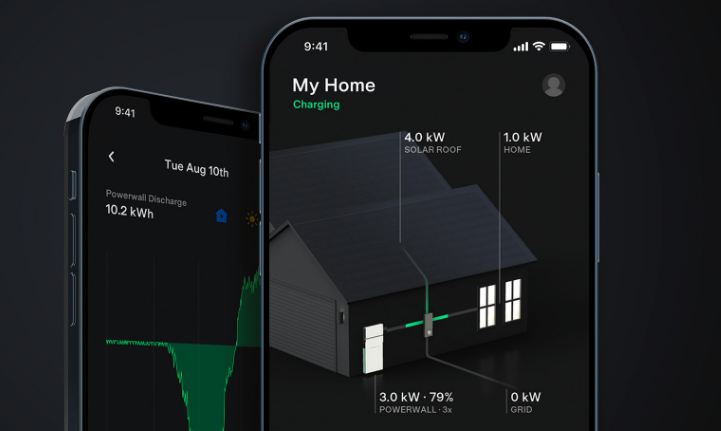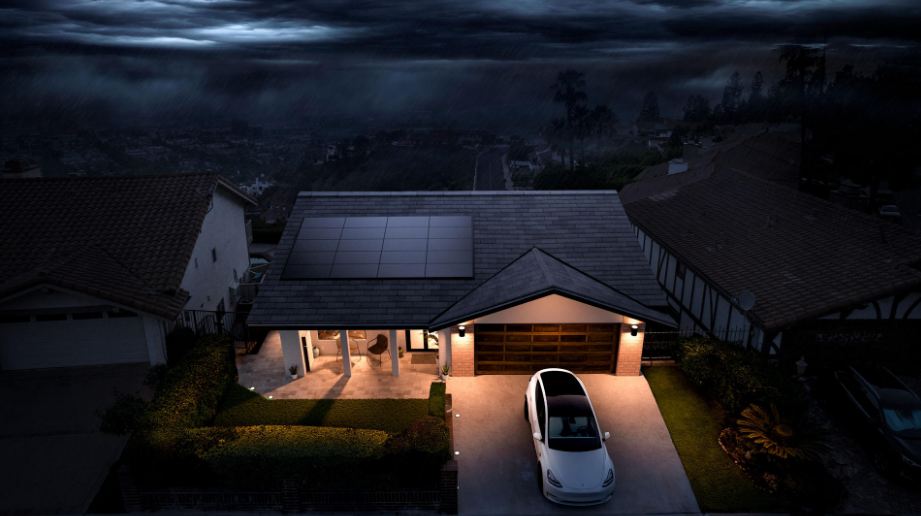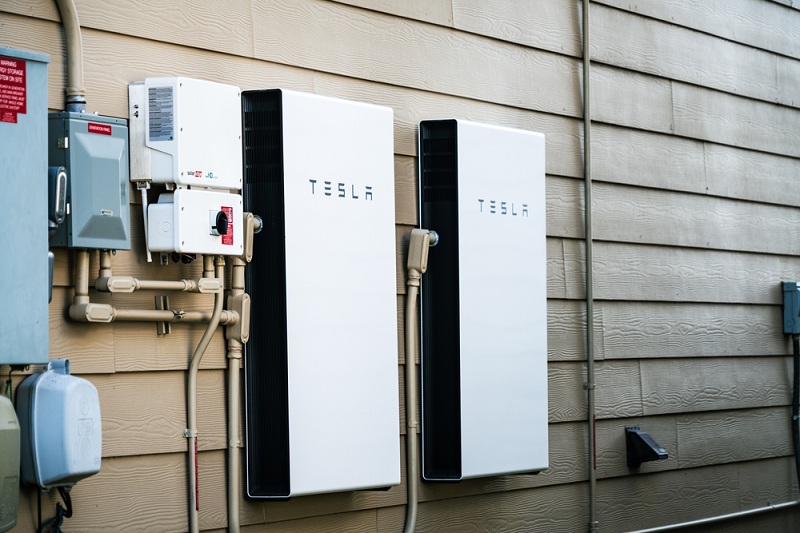Once considered an idea for the far future, solar energy storage has become a reality thanks to the Tesla Powerwall. Tesla has released various iterations of the Powerwall since its initial release. The most recent iteration is "Powerwall+."
Without any question, the Tesla Powerwall is a great storage solution for residential energy. It offers some cool functionality and is reasonably priced. However, is it worth using it with solar panels? You may be surprised by the answer.
Cost of Tesla Powerwall in 2022
The installation for one unit of Tesla Powerwall battery costs around $11,500, according to the latest estimates from August 2022.
Despite claims from Tesla that the price of the Powerwall would decrease by fifty percent in three years, we've seen a fourfold increase in the Powerwall prices, reaching their current price.
Moreover, Tesla doesn't sell Powerwall separately anymore, so the overall cost will include the cost of a Powerwall battery and a new solar panel when you buy it from them.
If you prefer to buy only the Powerwall, you can simply buy it from third-party sellers, but the problem with doing so is that there won't be any guarantee of getting it for $11,500.
You might need to replace your electrical panel if you want to use a Powerwall. This can result in an additional cost of around $3,000 to the total cost of installation. However, Tesla doesn't tell you that upfront when they first offer you an estimate for installing one.
Important Attributes of the Powerwall

The Tesla Powerwall offers some great specs and impressive smart features for managing and maintaining its batteries.
Battery Lifetime and Warranty
The Powerwall's Lithium-ion battery life is fairly standard. It will work at 70 percent of its capacity after ten years. Choosing an operating mode for the Powerwall battery affects its longevity.
Storage Capacity
A battery's energy storage capability indicates how much power it can hold. As the capacity increases, the battery will last for a longer time.
With its capacity of 13.5 kWh of power, the Powerwall provides enough stored power for nearly half of an average U.S. household's daily electrical needs. A single charge can power most of your basic needs for about a day.
Uninterrupted Power
With Powerwall+, Tesla introduced a new feature: continuous power supply. This indicates what type of appliance it can run and how long it can last before needing recharging.
Grid-connected batteries can provide around 8 kW of uninterrupted power when the sunlight is strong and 6 kW with no sunshine. One Powerwall can power lights, electrical sockets, and 120-VAC appliances such as refrigerators.
If you wish to use high-powered devices, you'll require additional power outlets, including air conditioning units.
One thing that makes the Powerwall different from other batteries is that its battery can produce up to 7 kW or 10 kW of energy when it operates off-grid, depending on the climatic conditions.
When the Powerwall isn't plugged into the wall socket, it can charge up enough electricity for some more devices in your house.
Peak Performance Rating
Apart from the constant power rating, there is a maximum power rating. It refers to the highest power they can produce for a brief period (about ten seconds).
Essentially, the maximum power rating indicates the battery's capacity to handle short bursts of high current draw, like when devices are switched on.
When connected to the grid, there is no maximum power output for the battery pack; however, when running off-grid, the power output ranges from 10kW to 22kW, depending on the weather conditions.
These ratings are significantly more than the average industry power rating of 7 kW. However, you can fully utilize the maximum power output from your panels only if your solar system is of at least 12 kW. If not, you won't be able to get sufficient power to attain that target.
Three Operating Modes

The Powerwall also comes in three different modes of operation:
The three modes let you decide when and how to use and store your batteries' power. Solar Self-Consumption mode enables you to store any extra solar energy generated during daylight hours for use at night or when there is not enough sunshine.
You can use Backup Power mode to ensure that your Powerwall works as a backup when the power goes out.
Time-Based Control mode is useful when utilities charge you as per 'Time Of Use' pricing, which means utilities charge different prices for electricity at different times of the day.
With time-based control, your Powerwall charges its batteries when energy costs are lower and discharges them when energy costs are highest, saving you money on monthly power bills.
AC-coupled
AC-coupling design means the batteries come with internal storage inverters. One of the benefits of AC-coupling battery packs is that they're easier to integrate into existing solar power setups. Moreover, they'll keep working even if there is some breakdown in your solar panel or batteries.
However, DC-powered systems are slightly more efficient than AC systems, and having extra hardware means more components could break down.
Why Does Tesla Powerwall Have A Long Waiting Time?

Since there’s so much interest in battery storage systems, Tesla has been experiencing long waiting times for its Powerwalls due to high customer demands. Tesla's production numbers just can't keep up. It was told that Tesla had 80,000 pending orders that hadn't been delivered yet.
You can buy a Powerwall from Tesla by purchasing a solar panel system or through an authorized Tesla installer. However, if you buy your Powerwall system directly from Tesla, you may get them faster than if you bought them through an installation partner.
People installing a Powerwall through Tesla installers have been waiting a year to receive their batteries. It appears as if Tesla prioritizes completing its direct orders before installing them for its dealerships.
Are There Any Incentives or Rebates With Tesla Powerwall?
Yes, you can get the battery storage incentive programs the US government offers if you buy a Tesla Powerwall.
The main reason for installing a Powerwall is the federal solar tax credit, which reduces the cost of an installation by 30%.
Some state governments and utility companies provide additional rebates and incentives. Rebates like California's SGI program and Green Mountain Power's Bring Your Device Program program can cover almost 90 percent of the cost of purchasing a Powerwall.Can Tesla Operate Without Solar Panels?

Tesla Powerwalls don't need solar panels to function; they can simply use electricity from the utility company to provide backup power when there's an electrical breakdown.
However, Tesla has stopped selling Powerwalls individually, which means that if you want to buy one directly from them, you also need to purchase a solar panel.
You can't purchase a Powerwall directly from Tesla without installing a complete solar power system. You would need to buy a Powerwall from an authorized Tesla partner.
However, as we mentioned earlier, installing a Tesla Powerwall means waiting longer than usual, and finding an installer willing to install a Powerwall without solar may be difficult. You may need to prepare yourself to wait for a long time.
Is the Tesla Powerwall Worth It?
Powerwall comes with the latest functions and impressive technical specifications at an affordable price.
So is the Powerwall worth buying? It's worth buying an actual battery pack for your solar system. Still, the efforts you have to put into dealing with Tesla and finding a Powerwall might not be worth it.
Tesla's decision to not offer Powerwall batteries without new solar panels means that homeowners who want to install their solar power won't be able to do so promptly, which is a big disappointment.
Homeowners with solar panels cannot buy a Powerwall directly from Tesla but need to look for a certified installer who sells individual Powerwall. Then combine it with Tesla's notoriously long waiting times.
When talking about solar installation, Tesla is infamous for providing poor after-sales services, so be prepared to deal with substandard customer service if you decide to go with them. If you buy your complete solar plus battery pack from Tesla, you'll be stuck with them for many years!
If you're not already using solar power, are willing to take risks in customer service, or are fine with waiting up to several months or even years before installing a battery. The Tesla Powerwall is the right choice.
If that doesn't work, you can always contact solar installers near you and ask them for recommendations or if they have Powerwall batteries available to install. Use our solar calculator below to find installers who can offer you the lowest prices for installing a solar panel with battery storage.


